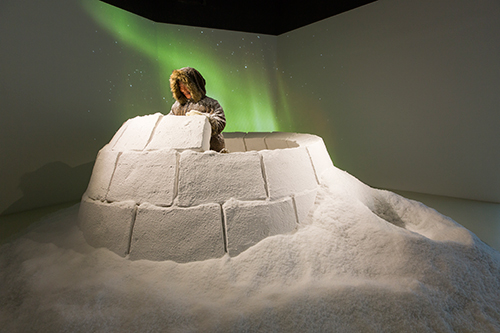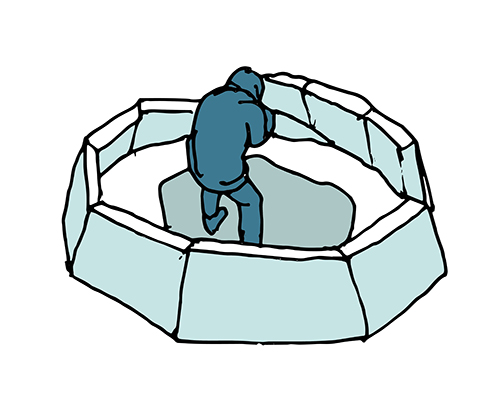The Challenging Life of the Inuit

The Inuit occupy one of the most inhospitable parts of the globe. Living up in and around the Arctic Circle, they put up with temperatures as low as minus 50°C. In winter, they face six months of darkness. And there’s a constant struggle to find food.
Once known as Eskimos, that title is now regarded as offensive. It means “raw-meat eater” and was probably first used by Native Americans as an insult to their cousins from the North. “Inuit” means “real people” and is typically how the people like to refer to themselves.
Found in northern Alaska, Canada and Greenland, the Inuit are most famous for their very distinctive homes—the igloo. This master of frozen design protects the Inuit in the harshest of conditions. Its design is surprisingly complex, involving tightly packed blocks of ice that are built in a narrowing spiral, with an ice ledge next to the wall for sleeping. Ice is actually an excellent insulator, and once the ice blocks thaw a little and re-freeze the walls become as hard as concrete. While the external temperature dropping so low, the internal one can be kept at around minus 10°C—hardly balmy, but cozy enough if you are decked out in the animal skins that prove such a valuable commodity for the people.

Their search for food once saw the Inuit confronting polar bears with basic spears. The fur of Arctic foxes, bears and wolves provide important insulation for homes, and also protect the face when outdoors in the elements. The rim of an Inuit’s hood is typically lined with wolf skin, with the skin facing inwards and the fur out, to protect against the snow and prevent water vapour from freezing on the clothing.
The Inuit have been given special permission to hunt endangered animals, since they are part of their historic prey. In Alaska, they hunt seals all year round, and are also allowed to target a certain number of polar bears. Reindeer and whales are part of the diet in the springtime.
Climate change is impacting the Inuit more and more. They traditionally live along the coastline near their main source of food, and since this keeps retreating, they have to retreat as well. The bounty from hunting and fishing is also much less certain, and many Inuit have taken to ready-made meals and junk food as a substitute.
Without the extreme cold, mosquitoes have begun to flourish, and other bacteria are not wiped out by the winter. The Inuit can no longer accurately forecast weather and ice conditions as they once did. Some have been trapped by melting ice and several have lost their lives. The igloos are making way for brick-and-mortar homes. Sadly for traditionalists, the historic lifestyle is becoming harder and harder to sustain.
by Alex Frew McMillan






